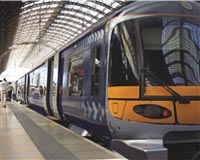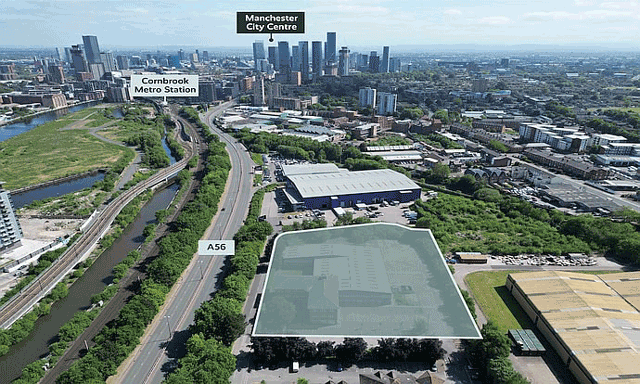 With so many rail upgrades in the pipeline, David Thame journeys into Yorkshire’s infrastructure to find out why these projects are struggling to stay on track
With so many rail upgrades in the pipeline, David Thame journeys into Yorkshire’s infrastructure to find out why these projects are struggling to stay on track
You could go mad trying to work out which Yorkshire rail infrastructure is going where, or when, or whether any of it will happen. So, deep breath, here goes.
The electrification of the TransPennine Leeds-Manchester line was paused in June, unpaused in October, and could begin in 2018 for completion in 2022. The sister TransPennine line Sheffield-Manchester is not due for improvement until 2024 or later, while the Midland Mainline electrification from Sheffield to Bedford was paused in June and might now be completed by 2023, but nobody is quite sure how unpaused it really is.
Hovering in the background is an even greater uncertainty: HS3, a high-speed link joining up the northern powerhouse, probably following the Leeds-Manchester route, and unlikely to happen before the 2030s.
Meanwhile, a decision is imminent on where the Leeds and Sheffield HS2 stations will go.
The final item – the location of HS2 stations – is symptomatic of the tangle of overhead wires and good intentions which turn these much-needed rail upgrades into regional headaches.
It would make sense to combine Leeds City station – which serves the TransPennine routes, and perhaps HS3 – with the New Vicar Lane HS2 station. The result would be a future-proof integrated transport hub. Unfortunately, the two stations are a few hundred yards apart, with major roads in between, and the track coming out of each points in different directions. Also, Leeds City station is on a constrained site.
In February, Sir David Higgins, chairman of HS2, was invited by chancellor of the exchequer George Osborne to look into the problem. His report was due to be published as EG went to press (see panel overleaf). The government says value for money will be the decider. Cynics say that if Higgins’ solution is expensive then it is a sign that there is more argument ahead – and the report was just another stop on the slow train to nowhere.
A similar dispute is ongoing in Sheffield, where a city centre station is going head-to-head with one at Meadowhall, an option that is said to be £1bn cheaper.
Edward Highfield, director of Creative Sheffield, the city council’s business arm, insists TransPennine electrification is the real priority. “For us, TransPennine is more important than HS2. We think it is critical to getting the northern powerhouse to work,” he says.
Reopening the Woodhead Tunnel to improve the Manchester-Sheffield link is high on the city council’s agenda. The idea of an HS2 station at Meadowhall, four miles from the HS3 station in Sheffield city centre, is, says Highfield, “inconceivable”.
Amid the uncertainty, only the electrification of the existing Leeds-Manchester TransPennine service seems hitched to a political engine with enough power to get the scheme moving. The chancellor unpaused the project to allow him to announce it at this autumn’s Conservative Party conference – a sure sign of political interest.
Martin Farrington, director of city development at Leeds city council, is clear that the electrification will happen and that it will make a difference to the Leeds office market.
“Improved journey times to Leeds will reinforce the agglomeration effect which is concentrating jobs in the city. We already have about 700,000 sq ft of new office floorspace in the pipeline, and improved transport will reinforce that trend,” he says.
“We are doing work now on the economic potential that will be unleashed around City station. Possibly it will be completed in 2016, but the kind of ideas we are looking at will optimise the South Bank by looking at sites like the Tetley Brewery.”
Last month, the 22-acre brewery site was sold to Ikea’s property arm, Vastint, for about £35m. “Sites like this could significantly expand the city core, both for commercial and residential development,” says Farrington.
Eamon Fox, partner at Knight Frank, believes the faster TransPennine service will have complicated effects on employment patterns.
“Last week it took me an hour and 20 minutes on the train to Manchester, and it is timetabled as an hour and five minutes – but even that is a long journey for barely more than 30 miles distance. So improvements are really needed,” he says.
“My Leeds clients are saying that if journey times get shorter they will recruit from Manchester, as well as Leeds, because tech and media businesses already feel they have exhausted the human resource pool in Leeds. Their logic is to recruit from city centre dwellers in Manchester. This is what they are telling me today – so imagine how much stronger will be the temptation to recruit from Manchester in the future.”
Fox adds: “There is also a risk that Leeds businesses will decide to move to Manchester. That risk doesn’t bother me – there is a reason why a company is in Leeds in the first place, and people will still need representation on both sides of the Pennines. But it will work both ways.”
Others worry that fast trains to Manchester may be a distraction, and that the money could be better spent resolving West Yorkshire’s internal transport hold-ups.
David Cran, associate director at Eddisons, says: “The whole of the North is heavily reliant on the M62 motorway: just one crash results in considerable tailbacks and has huge impacts on businesses.
“The electrification, while important in shortening journey times, also improves capacity and this is key. It should also reduce reliance on the motorways.”
Cran believes the question remains whether it is money well spent. He says: “Many argue the answer lies in increased motorway capacity or improved broadband speeds, reducing the need to even go into an office. There is no doubt Leeds has fallen behind other major UK cities in terms of transport, with no local tram system and, even more importantly, no train line to Leeds Bradford Airport.”
Connecting the city to the airport could deliver a greater economic boost. Cran points to Manchester’s close relationship with its enormous airport as proof. And what about Sheffield, he asks?
“Most of the electrification work is focused on the Manchester to Leeds stretch, leaving out Sheffield. Sheffield appears to be consistently undersold and has missed out on major infrastructure spending – continuing to make it less competitive as a city,” he says.
David Aspland, partner at Carter Jonas, says: “Combine HS2 with TransPennine electrification and you get a station that is a fantastic opportunity for a new commercial hub in Leeds. Get it right and this could be our Olympic Games, our big infrastructure boost.”
Developers are circling. Just four months ago Matt Crompton, director at Muse, handed over KPMG’s new 60,000 sq ft office at One Sovereign Square, and wants to develop more round Leeds City station. Sites like the 5.4 acres at Princes Square, next to the station, would interest him. Indeed, Muse bid for the site in 2011, but no sale was agreed and Network Rail says no return to the market is anticipated.
“Leeds will not thrive just because it is a few minutes closer to Manchester. But what will make a difference is train capacity, because that will get cars off the M62 and that could make the M62 corridor much more attractive for employment and distribution sites,” he says.
Electrification is not a panacea. There are other issues of capacity and routing that need to be resolved.
Martin Farrington, director of city development at Leeds city council, says: “Electrification is a great first step, but it is not the last step.”
Improvements are heading down the line – probably. But arrival times and eventual destinations are still unclear and delays a distinct possibility.
On the right track
TransPennine electrification Stalybridge to York via Leeds due for completion by 2022
Midland Mainline north of Bedford to Kettering and Corby complete by 2019, Kettering to Sheffield by 2023
Manchester to Sheffield electrification is a “tier two” priority for the period 2019 to 2024
Sheffield (Meadowhall) to Leeds via Barnsley/Castleford and Sheffield to Doncaster/Wakefield listed for 2019 to 2024
HS3
A third high-speed rail line linking Liverpool, Manchester, Leeds, Sheffield and Newcastle looks like it has wheels.
Journey times from Manchester to Leeds could be cut from 48 to 26 minutes.
The Department for Transport says it is working with a new agency, Transport for the North, on detailed plans to explore opportunities for strategic rail links across the North, which include examining options for new lines as well as improving the existing railway infrastructure.










